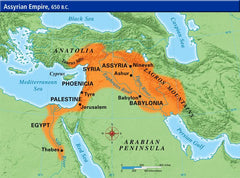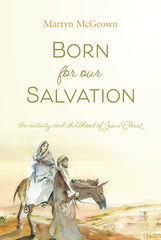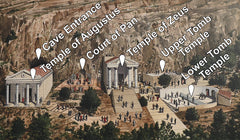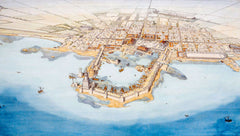Your cart is empty now.

Ignited by the Word - Volume 2 Issue 2
An article by Steve Kuiper from Ignited by the Word
Mr. Gutenberg's Dangerous Invention
Imagine if you didn’t have a single Bible in your home. No good books to read and no good magazines. No Standard Bearer. No Beacon Lights. No Ignited by the Word.
It’s hard to imagine, but for most of the history of the church, people didn’t have Bibles in their homes. This was before computers and copy machines and printers. Each Bible had to be carefully written out, copied word by word from another Bible.
Think how long it would take to copy even one page of the Bible that way. And then another page. And then another, until you had copied the whole Bible. It would take months and months. And when you were finished, you would only add one Bible. So, a Bible was a rare and expensive thing.
In the 1440s, about seventy-five years before the Reformation, a German named Johannes Gutenberg developed an improved printing press, using movable type. He took lots of little blocks, and carved each one in the shape of a single letter. Then he arranged the blocks to create a page of writing. By rolling ink on top of the letters and pressing a sheet of paper on them, he could print a whole page in just a moment. Then he could re-ink the letters, press another sheet of paper on them, and print another page. That was so much quicker than the old way.
Other printers followed Mr. Gutenberg’s example and built their own printing presses. Some made improvements to his process. There were also improvements in paper making and in the production of ink.
Then came the day in 1517 when Martin Luther wrote his ninety-five theses against abuses of the Roman Catholic Church. He hand-printed them in Latin, hoping to begin a scholarly debate. But those theses were soon translated into the language of common Germans and printed using the process that Mr. Gutenberg had developed. Hundreds, then thousands of copies of Martin Luther’s writings made their way into the hands of people all over Germany.
That was the beginning of a great Reformation. Later, when Martin Luther translated the Bible into German, those same printers made sure that more and more people could have their own copy of the Bible to read and study.
The Roman Catholic Church was not happy with printers who dared to publish the writings of Martin Luther. And they didn’t want common people to have Bibles printed in their own language.
Printers and booksellers were arrested and even killed for distributing Reformed writings and Bible translations. And not just in Germany. In the Netherlands, a man named Jacob van Liesveldt published a Dutch translation of the Bible. As a result, he was arrested and killed. In Hungary, a bookseller was burned at the stake, his Bibles stacked around him to feed the flames.
Today, we thank God that we have Bibles in our homes. And other good books. And good magazines. But having them in our homes isn’t enough. We can only learn from them if we pick them up and read them. Like you are doing right now!
_________
Click here to subscribe!
The content of the article above is the sole responsibility of the article author. This article does not necessarily reflect the opinions and beliefs of the Reformed Free Publishing staff or Association, and the article author does not speak for the RFPA.

Donate
Your contributions make it possible for us to reach Christians in more markets and more lands around the world than ever before.
Select Frequency
Enter Amount










